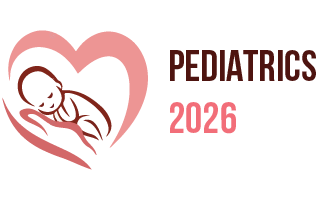4th International Conference on
Pediatrics & Neonatology
August 13-14, 2026 | Barcelona, Spain

Address: Avinguda Del Maresme 78 Ronda De Dalt Exit 15, 08940 Comellà de Llobregat, Barcelona, Spain
Pediatrics 2026

Makati Medical Center, Philippines
Abstract:
Background: Respiratory distress at birth is commonly seen in preterm neonates, which may necessitatenon-invasive respiratory support and, if this is unsuccessful, mechanical ventilation. However, prolongedmechanical ventilation (MV) is associated with risks. The decision to do so often depends on clinicians’ personal experiences, clinical judgement through interpretation of blood gas values as ventilator settings are weaned down, and a perception of the increasing lung maturity of the neonate. Objective: To determine the post-menstrual age and weight at extubation, and their relationshipwithextubation success in premature infants at a neonatal intensive care unit in a private tertiary hospital. Methods: A retrospective study was done to assess the patient demographics, maternal variables, neonatal comorbidities, ventilator parameters, clinical parameters and blood gas values of pretermneonates previously endotracheally intubated in the neonatal intensive care unit of a private, tertiaryhospital from January 1, 2013 to December 31, 2022. Results: The study included 156 patients, of who 127(81%) underwent successful endotracheal extubation. Compared to those who were unsuccessfully extubated, those successfully extubatedweresignificantly older in gestational age at birth(median:30 weeks);heavier at birth (median:1076grams); older at extubation(median corrected age:30.6weeks);and heavier at the time of extubation(median:932grams). The proportion of female neonates successfully extubated was higher. On further analysis,weight at the time of extubation and female sex were the only two factors that weresignificantly associated with successful extubation.
Biography:
Michaella M. Alvarez, MD has completed her Doctor of Medicine from De La Salle Health Sciences Institute and completed her Pediatric Residency at Makati Medical Center. She has recently passed the written specialty exam of the Philippine Pediatric Society and is currently applying for a Pediatric Fellowship Program locally.
